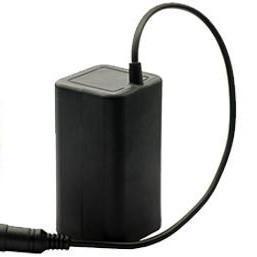
Dyno vs Battery Power?
Share
 So you're considering taking part in an offroad cycle race like The Munga? That’s 1 000 km over five days. A race of that caliber will make great demands on you, and not just the obvious ones. Successfully completing a challenge of this scale demands that you effectively balance three vital aspects: your physical power, your willpower, and whatever electrical power you will have available.
So you're considering taking part in an offroad cycle race like The Munga? That’s 1 000 km over five days. A race of that caliber will make great demands on you, and not just the obvious ones. Successfully completing a challenge of this scale demands that you effectively balance three vital aspects: your physical power, your willpower, and whatever electrical power you will have available.
When you are looking at that entry form and wondering how your signature magically appeared on it, the first question that will come into your mind is: Why?... But there’ll be plenty of time for philosophy in the saddle. You’re going to be keeping a good pace, day and night – and to ride safely, you will need light. Plus, you’re going to want to bring your mobile phone. So, a more important question is: How will I power my electrical devices? Some options are available. Here, we’ll be asking: Which is best: hub-mounted dynamo or Li-ion battery pack? Dynamos do have advantages. They provide power when you move, and only go dead when you stop. They are also part of a simple, integrated solution that takes up little space.
Let’s work it out mathematically. If you weigh 70 Kg and are pedaling at 15 Km/h on a straight, flat road, you will be generating around 60 watts of power. If a dynamo is consuming 3 watts of that power, it will impose an effective penalty of 0.75 Km/h, slowing you from 15 Km/h to 14.25 Km/h. So what, you might think. It’s not such a big number… until you realise that your total ride time will have increased by 5%. 5% of 1 000 Km? That’s 50 Km extra you have to cycle! If you put it in terms of time, it doesn’t get any better: over a total night-riding time of 40 hours (8 hours x 5 days), that drag penalty will steal an extra two hours from you. So you want a dynamo? Say Goodbye to any hope of a reasonably-placed finish. Two fully-charged Panasonic 7.4V 6.8Ah lithium-ion battery packs give you a total of 100 watt-hours. (To put that into perspective, they will supply 1 watt for 100 hours, 2 watts for 50 hours, and so on.) Mass? There is a 100g increase over a dynamo. However, if you weigh 70 Kg, then that is a relatively insignificant 0.14% increase - which may actually give you an advantage. Why? Because in the Manga, you start at an altitude 1 300m higher than at the end. So, on average, the mass of the battery pack will actually have helped your forward momentum!

Let’s think about a complete solution. Say you’re using the XP3 Cycle light. In theory, you could get away with using a single battery pack to power it, as using only the light’s Low mode would deliver up to 40 hours of light. Then, the second battery pack could be used as a backup, as well doing double-duty as a power bank for your electronic devices (connected using the Powerbank USB Adapter). You may think you could get away with using a conventional 5V power bank instead of our 7.4V alternative, but it’s not a fair comparison. The 5V power banks simply don’t have the amp-hour rating you will need to complete the race, meaning that at some point, you’ll be groping forward in the dark! To recap: we are able to offer you a complete, turn-key battery, power bank, and lighting solution that will effectively give you a 5% or greater advantage over every other competitor using a dynamo. Let us know what you think in the Comments section below.

